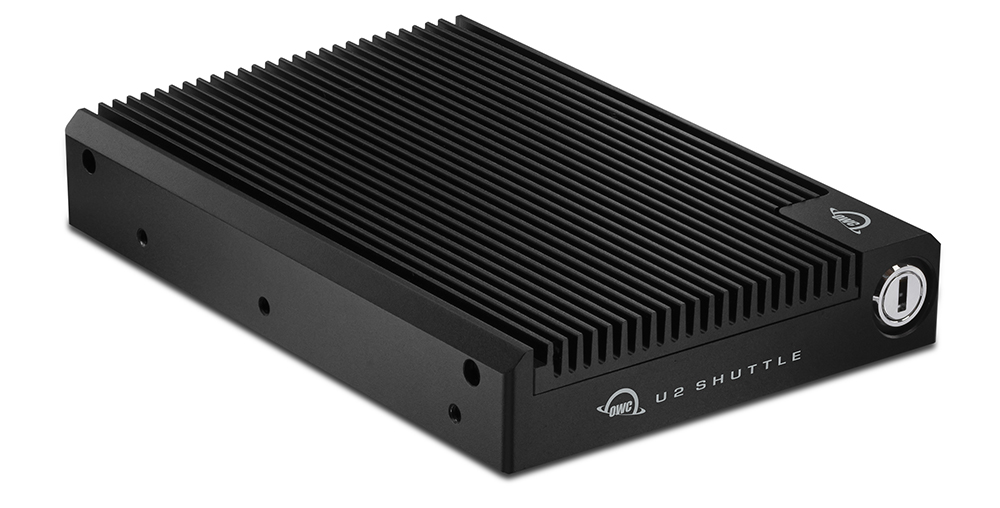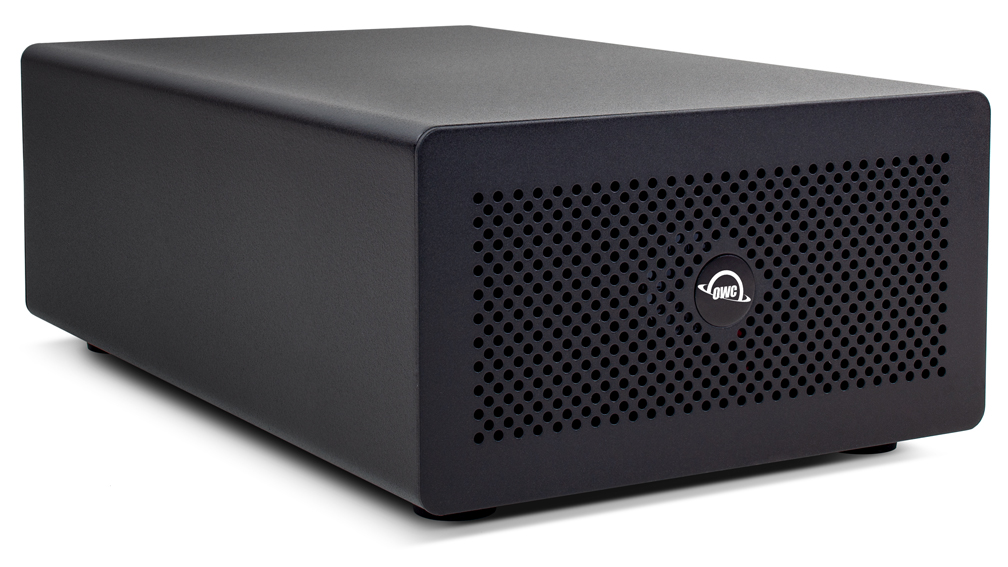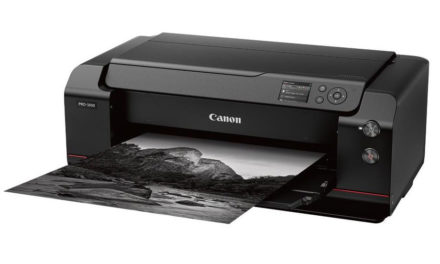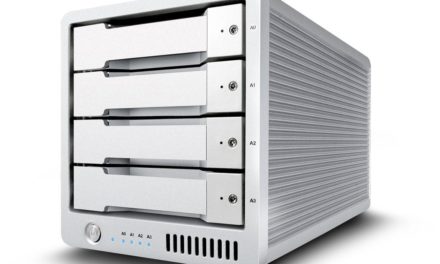Expansion Box with Very Fast NVMe Stuffed U.2 Shuttle
Review by Erik Vlietinck
The Mercury Helios 3S is an aluminum, dual-port 85W charging Thunderbolt 3 expansion box with a dedicated DisplayPort 1.4 for an 8K display. The Mercury Helios 3S accepts one PCIe (x16) slot for half-length, full-height, single or double-width cards. You can daisy-chain up to five additional Thunderbolt devices. OWC added the capability to install a U.2 Shuttle in the Helios 3S. My test unit came preconfigured with OWC Aura P12 Pro SSDs.
To install and use the U.2 Shuttle, you’ll first need to install a carrier unit inside the Mercury Helios 3S that enables you to insert the Shuttle and swap it out. Unfortunately, with the U.2 Shuttle carrier unit installed, the ability to install PCIe cards is lost. The U.2 Shuttle itself has a security lock with key, and the enclosure has cooling ribs made for heat dissipation. The whole, when installed and ready, is robust and heavy. The power cable is also a locking type.

I feared for the sound of the quite large cooling fan inside the Mercury Helios that’s designed to cool PCIe cards as well as the shuttle. Other OWC devices I tested in the past have often not been silent, and I needed to bury them beneath my desk to keep the noise to a bearable level. I’m very happy to say that’s absolutely not the case with the Mercury Helios. The fan does make some noise, but you’d have to put your ear at about 10cm from the unit to hear a faint, low-pitched fan noise. It’s so quiet that I was able to just place it on my desk.
As for the U.2 Shuttle, I must admit it makes your workflow very efficient if you can just take a whole day’s worth of images and/or videoclips and replace it with a fresh shuttle, ready to go for the next session, with both of them ready for offloading at a later time.
The four Aura P12 NVMe SSDs inside the OWC U.2 Shuttle give you more RAID options than a dual-drive enclosure or adapter card. With or without OWC’s Soft-RAID software, you can put these in RAID 0, 1, 4, 5 or 1+0 (10). I’m a fan of SoftRAID because it offers maximum volume capacity, best possible drive performance, data protection, and more, and it’s ideal for anyone who needs to safely store and back up massive amounts of data, e.g., video editors, audio producers, photographers, and graphic designers. The downside today is that it won’t work on a Big Sur system (a beta is available).

If you don’t want to use the Mercury Helios 3S enclosure, by the way, you can use the carrier shuttle with U.2 port-equipped PCs and servers as well.
The performance of the 2-TB, U.2 Shuttle that I received for testing was great. I consistently got 2400MB/sec out of them. With the maximum capacity OWC offers in a ready-to-go U.2 Shuttle of 32 TB, you also won’t run out of space quickly.
There’s only one thing that I’d like to be different about the system and that’s the side where you mount and swap out the Shuttle. As it is now, it’s at the back where the cables are. It would have been easier if you could swap Shuttles from the front. Admittedly, that’s a small detail considering the unit’s build quality and its beneficial effects on your workflow. The Mercury Helios 3S with a U.2 interchange system retails at $279; the U.2 Shuttle by itself without any NVMe modules installed costs $149; and my 2-TB test Shuttle costs $479. ■






